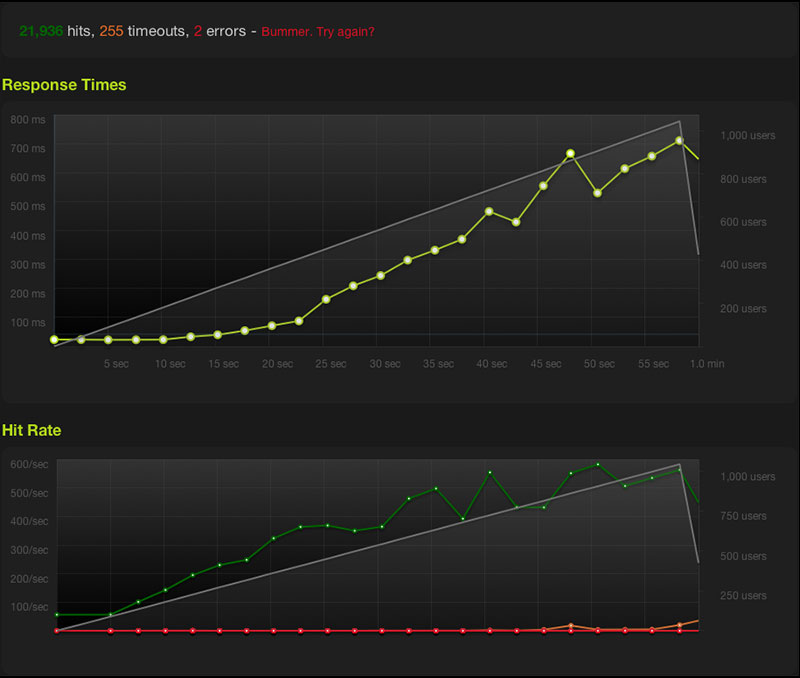Properties 类表示了一个持久的属性集。Properties 可保存在流中或从流中加载。属性列表中每个键及其对应值都是一个字符串。
特点:
1、Hashtable的子类,map集合中的方法都可以用。
2、该集合没有泛型。键值都是字符串。
3、它是一个可以持久化的属性集。键值可以存储到集合中,也可以存储到持久化的设备(硬盘、U盘、光盘)上。键值的来源也可以是持久化的设备。
4、有和流技术相结合的方法。
l load(InputStream) 把指定流所对应的文件中的数据,读取出来,保存到Propertie集合中
l load(Reader)
l store(OutputStream,commonts)把集合中的数据,保存到指定的流所对应的文件中,参数commonts代表对描述信息
l stroe(Writer,comments);
package com.oracle.Properties;
import java.util.Properties;
import java.util.Set;
public class Demo01 {
public static void main(String[] args) {
//创建集合对象
Properties pro=new Properties();
//赋值
pro.setProperty("name", "张三");
pro.setProperty("age", "123");
//System.out.println(pro.getProperty("age"));//测试
//遍历相当于map中的keyset
Set
int num=0;
for(String key: set){
num++;
//通过键找值
System.out.println(num+" "+key+" "+pro.getProperty(key));
}
}
}
运行结果:

package com.oracle.Properties;
import java.io.FileOutputStream;
import java.io.IOException;
import java.util.Properties;
public class Demo03 {
public static void main(String[] args) throws IOException {
//创建Properties对象
Properties pro=new Properties();
//创建字节输出流对象
FileOutputStream fos=new FileOutputStream("E:\\test\\por2.properties");
//准备数据
pro.setProperty("name","lisi");
pro.setProperty("age","123");
pro.store(fos, "李四");
}
}
运行结果:

需求:从属性集文件prop.properties 中取出数据,保存到集合中
分析:
1,创建集合
2,创建流对象
3,把流所对应文件中的数据 读取到集合中
load(InputStream) 把指定流所对应的文件中的数据,读取出来,保存到Propertie集合中
load(Reader)
4,关闭流
5,显示集合中的数据
package com.oracle.Properties;
import java.io.FileInputStream;
import java.io.IOException;
import java.util.Properties;
public class Demo02 {
public static void main(String[] args) throws IOException {
//创建Properties对象
Properties pro=new Properties();
//获取输入流对象
FileInputStream fis=new FileInputStream("E:\\test\\pro.properties");
//从文件中读取简直对到集合中
pro.load(fis);
//释放资源
System.out.println(pro);
}
}
运行结果:

注意:使用字符流FileReader就可以完成文件中的中文读取操作了
序列化流与反序列化流
用于从流中读取对象的
操作流 ObjectInputStream 称为 反序列化流
用于向流中写入对象的操作流 ObjectOutputStream 称为 序列化流
特点:用于操作对象。可以将对象写入到文件中,也可以从文件中读取对象。
ObjectOutputStream 将 Java 对象的基本数据类型和图形写入 OutputStream。可以使用 ObjectInputStream 读取(重构)对象。通过在流中使用文件可以实现对象的持久存储。
注意:只能将支持 java.io.Serializable 接口的对象写入流中


Person类:
package com.oracle.ObjectOutputStream;
import java.io.Serializable;
public class Person implements Serializable {
private String name;
private int age;
public Person(String name, int age) {
super();
this.name = name;
this.age = age;
}
public String getName() {
return name;
}
public void setName(String name) {
this.name = name;
}
public int getAge() {
return age;
}
public void setAge(int age) {
this.age = age;
}
@Override
public String toString() {
return "Demo01 [name=" + name + ", age=" + age + "]";
}
}
添加数据:
package com.oracle.ObjectOutputStream;
import java.io.FileOutputStream;
import java.io.IOException;
import java.io.ObjectOutputStream;
public class Demo01 {
public static void main(String[] args) throws IOException {
//明确数据源
FileOutputStream fos=new FileOutputStream("E:\\test\\person.txt");
ObjectOutputStream oos=new ObjectOutputStream(fos);
oos.writeObject(new Person("佩奇",18));
oos.close();
}
}
运行结果:

ObjectInputStream 对以前使用 ObjectOutputStream 写入的基本数据和对象进行反序列化。支持 java.io.Serializable接口的对象才能从流读取。


package com.oracle.ObjectOutputStream;
import java.io.FileInputStream;
import java.io.IOException;
import java.io.ObjectInputStream;
public class Demo02 {
public static void main(String[] args) throws IOException, ClassNotFoundException {
//明确数据源
FileInputStream fis=new FileInputStream("E:\\test\\person.txt");
//创建反序列流
ObjectInputStream ois=new ObjectInputStream(fis);
//多态 重写toString方法
Object obj=ois.readObject();
//Person p=(Person)obj;
//强转
System.out.println(obj);
//释放资源
ois.close();
}
}
运行结果:

当一个对象要能被序列化,这个对象所属的类必须实现Serializable接口。否则会发生异常NotSerializableException异常。
同时当反序列化对象时,如果对象所属的class文件在序列化之后进行的修改,那么进行反序列化也会发生异常InvalidClassException。发生这个异常的原因如下:
l 该类的序列版本号与从流中读取的类描述符的版本号不匹配
l 该类包含未知数据类型
l 该类没有可访问的无参数构造方法
Serializable标记接口。该接口给需要序列化的类,提供了一个序列版本号。serialVersionUID. 该版本号的目的在于验证序列化的对象和对应类是否版本匹配。
l 代码修改如下,修改后再次写入对象,读取对象测试
package com.oracle.ObjectOutputStream;
import java.io.Serializable;
public class Person implements Serializable {
private String name;
private int age;
private static final long serialVersionUID=123456L;
public Person(String name, int age) {
super();
this.name = name;
this.age = age;
}
public String getName() {
return name;
}
public void setName(String name) {
this.name = name;
}
public int getAge() {
return age;
}
public void setAge(int age) {
this.age = age;
}
@Override
public String toString() {
return "Demo01 [name=" + name + ", age=" + age + "]";
}
}
当一个类的对象需要被序列化时,某些属性不需要被序列化,这时不需要序列化的属性可以使用关键字transient修饰。只要被transient修饰了,序列化时这个属性就不会序列化了。
同时静态修饰也不会被序列化,因为序列化是把对象数据进行持久化存储,而静态的属于类加载时的数据,不会被序列化。
public class Person implements Serializable {
/*
* 给类显示声明一个序列版本号。
*/
private static final long serialVersionUID = 1L;
private static String name;
private transient/*瞬态*/ int age;
public Person() {
super();
}
public Person(String name, int age) {
super();
this.name = name;
this.age = age;
}
public String getName() {
return name;
}
public void setName(String name) {
this.name = name;
}
public int getAge() {
return age;
}
public void setAge(int age) {
this.age = age;
}
@Override
public String toString() {
return "Person [name=" + name + ", age=" + age + "]";
}
}
打印流
3.1 打印流的概述打印流添加输出数据的功能,使它们能够方便地打印各种数据值表示形式.
打印流根据流的分类:
字节打印流 PrintStream
字符打印流 PrintWriter
方法:
void print(String str): 输出任意类型的数据,
void println(String str): 输出任意类型的数据,自动写入换行操作
package com.oracle.dayinliu;
import java.io.BufferedReader;
import java.io.BufferedWriter;
import java.io.FileNotFoundException;
import java.io.FileReader;
import java.io.FileWriter;
import java.io.IOException;
import java.io.PrintWriter;
public class Demo01 {
//打印流:没有数据源 只有数据目的
//永远不会抛IO异常
//PrintStream
//PrintWriter
public static void main(String[] args) throws IOException{
m1();
}
public static void m1() throws FileNotFoundException{
PrintWriter pw=new PrintWriter("E:\\test\\print.txt");
pw.println(100);
pw.flush();
pw.println(true);
pw.print("aaa");
pw.flush();
//释放资源
pw.close();
}
public static void m2() throws IOException{
//打印流自动刷新的前提:
//可以续写
FileWriter fw=new FileWriter("E:\\test\\print.txt",true);
PrintWriter pw=new PrintWriter(fw,true);
pw.println("拉拉");
pw.println("呃呃");
pw.close();
}
}
}
运行结果:

构造方法:
开启文件自动刷新写入功能
public PrintWriter(OutputStream out, boolean autoFlush)
public PrintWriter(Writer out, boolean autoFlush)
package com.oracle.dayinliu;
import java.io.BufferedReader;
import java.io.BufferedWriter;
import java.io.FileNotFoundException;
import java.io.FileReader;
import java.io.FileWriter;
import java.io.IOException;
import java.io.PrintWriter;
public class Demo01 {
//打印流:没有数据源 只有数据目的
//永远不会抛IO异常
//PrintStream
//PrintWriter
public static void main(String[] args) throws IOException{
m3();
}
public static void m2() throws IOException{
//打印流自动刷新的前提:
//可以续写
FileWriter fw=new FileWriter("E:\\test\\print.txt",true);
PrintWriter pw=new PrintWriter(fw,true);
pw.println("拉拉");
pw.println("呃呃");
pw.close();
}
public static void m3() throws IOException{
//获取数据流
FileReader fr=new FileReader("E:\\test\\print.txt");
//包装基本流变成高效率流
BufferedReader br=new BufferedReader(fr);
//创建输出流对象
FileWriter fw=new FileWriter("E:\\test\\e\\print.txt");
PrintWriter pw=new PrintWriter(fw,true);
//开始复制
String line=null;
while((line=br.readLine())!=null){
pw.println("拉拉");
pw.println("呃呃");
}
//释放资源
pw.close();
br.close();
}
}
运行结果:

commons-IO
加入classpath的第三方jar包内的class文件才能在项目中使用
创建lib文件夹
将commons-io.jar拷贝到lib文件夹
右键点击commons-io.jar,Build Path→Add to Build Path
这个工具类是用来处理文件名(译者注:包含文件路径)的,他可以轻松解决不同操作系统文件名称规范不同的问题
常用方法:
getExtension(String path):获取文件的扩展名;
getName():获取文件名;
isExtension(String fileName,String ext):判断fileName是否是ext后缀名;
提供文件操作(移动文件,读取文件,检查文件是否存在等等)的方法。
常用方法:
readFileToString(File file):读取文件内容,并返回一个String;
writeStringToFile(File file,String content):将内容content写入到file中;
copyDirectoryToDirectory(File srcDir,File destDir);文件夹复制
copyFile(File srcFile,File destFile);文件复制
提供文件操作(移动文件,读取文件,检查文件是否存在等等)的方法。
常用方法:
readFileToString(File file):读取文件内容,并返回一个String;
writeStringToFile(File file,String content):将内容content写入到file中;
copyDirectoryToDirectory(File srcDir,File destDir);文件夹复制
copyFile(File srcFile,File destFile);文件复制
package com.oracle.dayinliu;
import java.io.File;
import java.io.IOException;
import org.apache.commons.io.FileUtils;
import org.apache.commons.io.FilenameUtils;
public class Demo02 {
public static void main(String[] args) throws IOException {
// m1();
// m2();
// m3();
//m4();
m5();
}
public static void m1(){
//获取文件的扩展名
String ext=FilenameUtils.getExtension("E:\\test\\a.java");
System.out.println(ext);
}
public static void m2(){
//获取文件的文件名
String fileName=FilenameUtils.getName("E:\\test\\a.java");
System.out.println(fileName);
}
public static void m3(){
//获取文件是否以java结尾
boolean flag=FilenameUtils.isExtension("E:\\test\\a.java","java");
System.out.println(flag);
}
public static void m4() throws IOException{
File file=new File("E:\\test\\x.txt");
String cOntent=FileUtils.readFileToString(file);
System.out.println(content);
}
public static void m5() throws IOException{
//文件夹复制
File f1=new File("E:\\test\\e");
File f2=new File("E:\\test");
FileUtils.copyDirectoryToDirectory(f1, f2);
}
}

 京公网安备 11010802041100号 | 京ICP备19059560号-4 | PHP1.CN 第一PHP社区 版权所有
京公网安备 11010802041100号 | 京ICP备19059560号-4 | PHP1.CN 第一PHP社区 版权所有